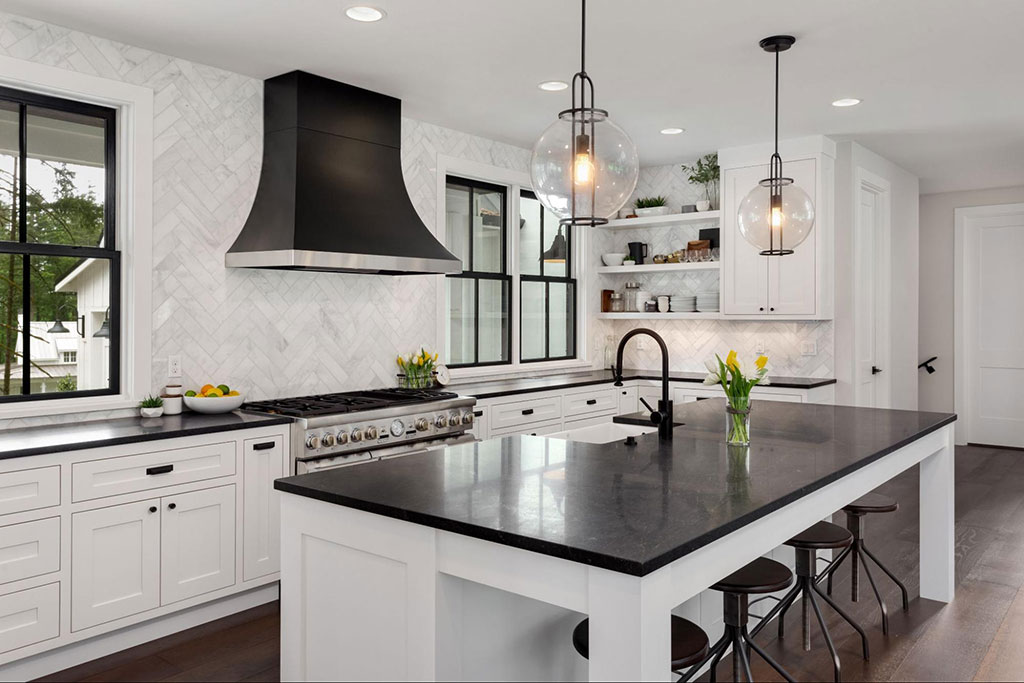When to Replace Your Kitchen Cabinets

Kitchen cabinets are one of the most integral features of a kitchen, both functionally and aesthetically. Your kitchen cabinets work hard, which is why it’s important to know when it’s time to replace them. There are several reasons why it may be time for an upgrade, whether it’s a truly needed project or because you want to improve the look and function of your kitchen.
7 Signs it Might Be Time to Replace Your Kitchen Cabinets
- Excessive wear – Examine all parts of your cabinets. If they are made of wood, look out for warping. If they are laminate, bubbling and peeling are causes to replace. If there’s any sign that your cabinets might not be able to keep doing their job — they’re falling off the wall, sagging, or just aren’t functional, it’s probably time to replace them.
- Water damage and mold – If you have wood cabinets, look for any blackening or dark spots, which is a tell-tale sign of water damage. Moisture can also cause mold and mildew in both wood and manufactured cabinets, which may be apparent by discoloration, a fuzzy texture, or even smell. Pay particular attention to cabinetry around the sink and refrigerator, where dampness may occur. A professional can fix minor growth, but replacement is necessary if the damage is substantial.
- Your kitchen cabinets just aren’t functioning well – If drawers or cabinets aren’t operating correctly, and a simple adjustment doesn’t fix the problem, it’s time to change them out.
- Your cabinets are outdated – Refreshing your cabinets can immediately enhance the appearance of the kitchen, and be tailored to your taste. As with other parts of a home, cabinets have various characteristics that convey different styles. For example, arched inserts give a country feel, while flat-faced cabinets look more modern. If it feels like your cabinets just aren’t conveying the right style for your home, it might be time for a replacement.
- You’re looking for a layout change – The current configuration of your kitchen may not best suit your family’s needs. If you need help with a new design that optimizes the space in your kitchen, your best bet is to hire a kitchen designer, who can help you reconfigure the space, and replace your cabinets with the products that best fit your new layout.
- Your home’s original kitchen cabinets were poorly built – Not all kitchen cabinets are built the same; there is quite a range in quality. Pre-fabricated, factory-built cabinets simply do not last as long as custom, high-quality ones. If yours are starting to fall apart, replacing them for something of higher quality can go a long way to refreshing the aesthetic of your home.
- You’re looking to make a meaningful investment in your home – A kitchen remodel often improves the value of your home. The Return on Investment (ROI) is estimated to be between 50%-80%, which means kitchen cabinet replacement is an investment worth its weight in gold.
Should I Replace or Reface the Cabinets?
If you ran through the above signs and are noticing your kitchen cabinets are leaning on the side of “replace”, it’s good to know that a straight replacement of your cabinets isn’t your only option! Refacing is also a great, cost-effective way to get the benefits of new cabinets, with less than half the work.
First, it’s key to understand what it means to reface cabinets. Refacing cabinets refers to replacing the cabinet doors and drawer fronts only; the frames, sometimes called boxes, remain in place. The hardware (hinges, knobs, and drawer pulls) can be swapped out as well for more of a transformation.
When It’s Better to Reface Kitchen Cabinets
- You have a tight budget – A full overhaul of kitchen cabinets is quite a bit pricier than simply refacing the doors and drawer fronts. If you’re working with a tighter budget, refacing your kitchen cabinets can get you similar effects of brand new cabinets, without the full price tag.
RELATED: How to Finance a Kitchen Remodel
- Cabinet frames are in good shape – If the cabinet boxes have solid integrity and aren’t showing signs of wear, it makes sense to keep them. They can always be veneered or painted to match new doors.
- You’re looking to make simple changes – When you choose to reface your kitchen cabinets, you can keep all of your appliances in place and all your dishes on the shelves (if work such as sanding and painting won’t be done to the interior). Plus, refacing doesn’t take nearly as much time as a full kitchen cabinet replacement.
When It’s Better to Replace
- You want to change the layout – If you intend to majorly modify the orientation of appliances, add an island, etc., it will be practically impossible to keep and reuse your existing cabinets.
- The frames are in poor condition – If your existing cabinets aren’t in the best shape, it’s a better investment to do a full kitchen cabinet replacement instead of mismatching the quality of the fronts to the rest of the cabinets.
- Better organization – Perhaps you’d rather have more drawers than cabinets, or the sizes of your existing cabinets aren’t as functional. The placement of cabinets matters when it comes to suiting your family’s lifestyle needs. In this case, replacing is a better option.
Are your kitchen cabinets in need of some updates? Talk to Standard Kitchens. Our team is happy to help you find something that complements your home’s design, suits your family’s lifestyle, and fits into your budget. Contact us today.
